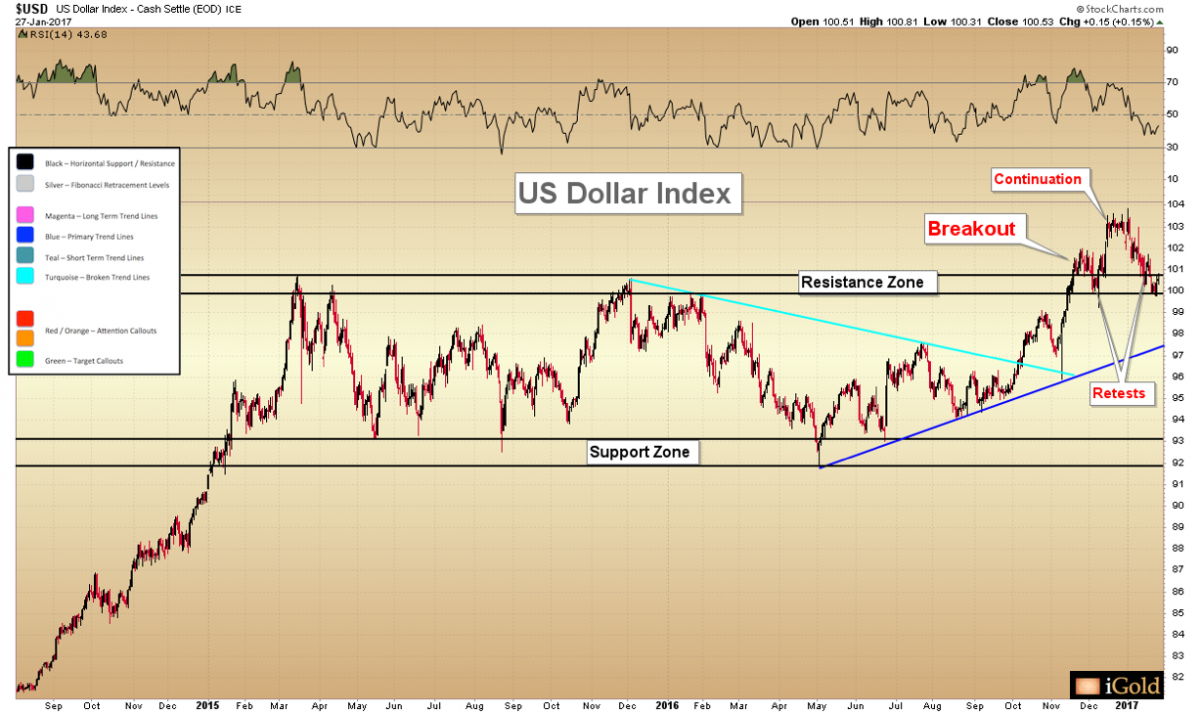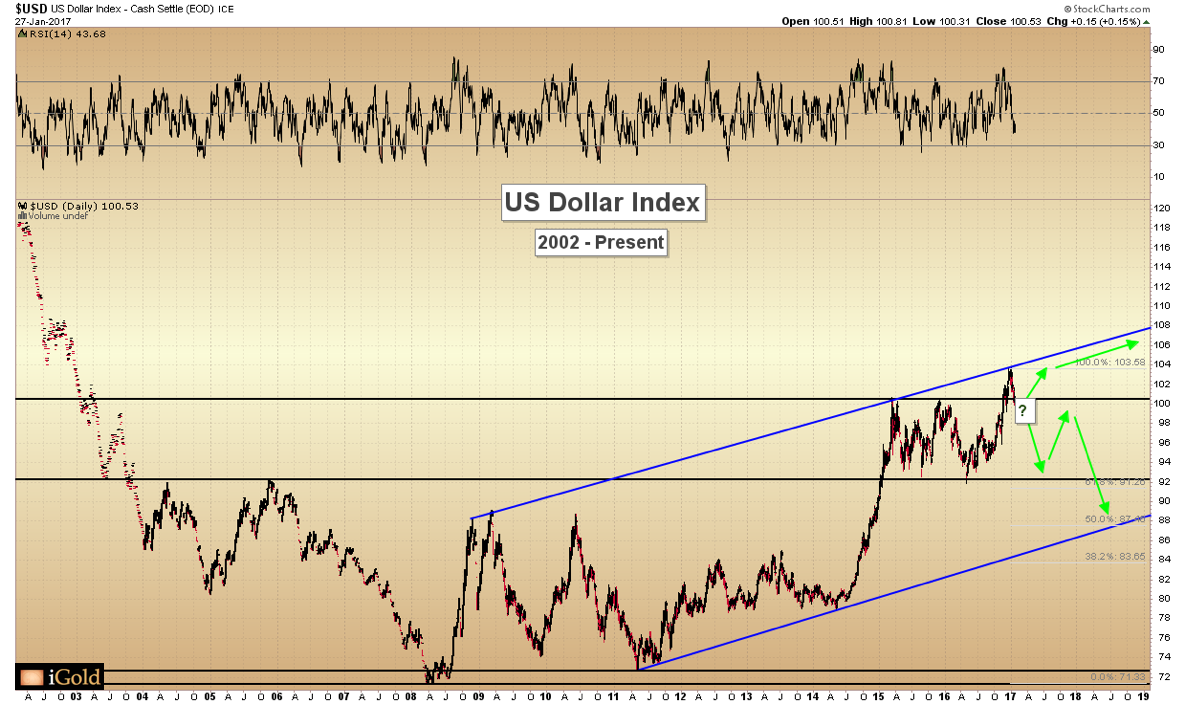US Dollar Index Weakness…Implications For Gold Prices
The US Dollar Index is acting weaker than it “should”, given the magnitude of the breakout from the nearly 2-year consolidation seen last November, and illustrated in the following chart:
As of the close Friday, the dollar fell for a fifth week in a row against a basket of foreign currencies as composing the Dollar Index, down by 0.16 to close just above 100.5.
As the dollar and precious metals tend to move inversely over the short and intermediate timeframe, the implications of this weakness on the gold price are significant.
To be strict in our technical analysis, we still cannot officially consider the recent weakness in the dollar as anything other than a second retest of the breakout zone between 100 – 101. The breakout must be respected until proven otherwise – and it still carries a target of 108 on the Index.
Yet we are on alert: for when a market does not behave as it should after an important breakout, it must be taken as a warning sign.
Mainstream Analysts Missing Perspective
There has been some analysis in the mainstream press recently suggesting that should the dollar fail to hold 100, it could retreat perhaps to 97 – 98 before finding support. While this is true from a short-term basis, as there is a rising (blue) trend line visible on the chart from the May lows, we believe this analysis is largely missing the big picture.
A failure for the dollar to hold its November breakout would constitute an extremely bearish “false breakout” from a 2-year consolidation. The result should be a severe plunge to the downside lasting for several months as an initial wave. The blue trend line shown above would not provide more than a temporary bounce in such a situation. False breakouts following new multi-year highs represent major reversal patterns, quite in contrast to false breakouts from a multi-year bottoms.
The mainstream financial press is missing the significance that such a reversal would constitute.
US Dollar Long-Term
We now zoom the chart out for a 15-year perspective to gauge some of the targets for either scenario:
We can see that the advance in the US dollar since 2008 has been defined by a broad parallel trend channel, shown above in blue.
The most recent surge began in 2014, roughly corresponding with the most severe portion of gold and silver’s declines that year.
We can see that the breakout from the 2-year consolidation has resulted in a recent hit on the upper blue trend line, above. The market seems to have rejected an advance through this trend line.
Yet we still have a calculated breakout target of 108 on the Dollar Index.
We see two possibilities for the dollar, highlighted above by the green target arrows.
- If the dollar continues to advance toward its 108 target, it will do so in a grinding fashion, advancing slowly along the upper boundary of the blue channel over the next 12-18 months.
- Should the dollar fail and thus setup a false breakout, we see a rapid initial decline toward 92, followed by a relief rally, before a further plunge brings the Dollar Index toward the lower blue boundary, at minimum 87. It is likely that this lower boundary would fail to act as support for longer than 3-4 months, and the dollar would break the trend channel toward a measured target of 81. The target is based on the amplitude of the failed consolidation and breakout (11) subtracted from the 92 support level.
Takeaway On The Dollar And Gold
In short, the next several weeks will be critical to watch in the dollar for one of these two scenarios to become more clear.
The precious metals markets, in showing signs of a long-term bottom, are signaling that the dollar is due for a substantial decline at some point during the next 2-3 years. The question is: will the dollar decline from the higher 108 target, or will it occur earlier from the present level near 100?
We should note that it is not impossible for the precious metals to rise alongside the dollar, especially if the US currency advances as in scenario A above. A grinding advance in the dollar has corresponded with grinding advances in gold, for example in 2005.
A more rapid plunge in the dollar (Scenario B) would be a move we want to be aggressively positioned for, both in physical precious metals and leveraged investment vehicles.
********




















